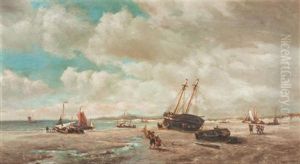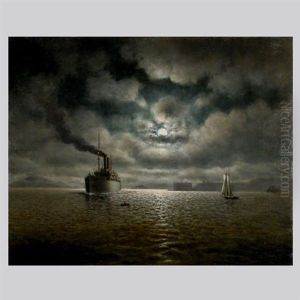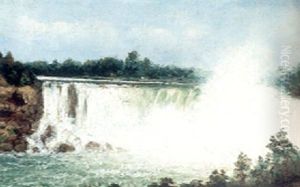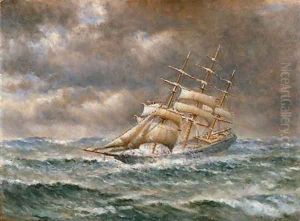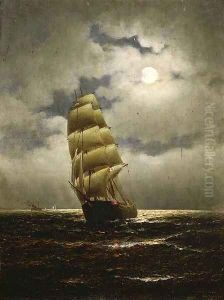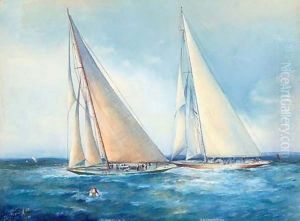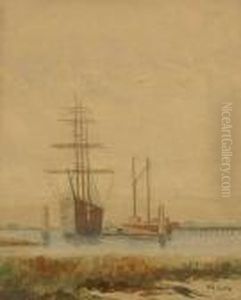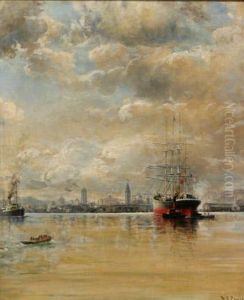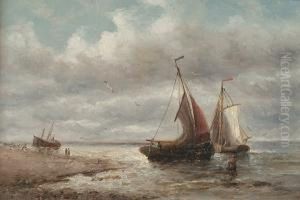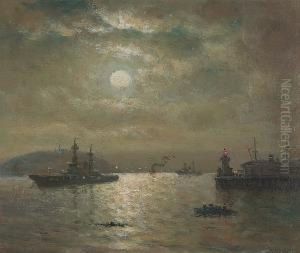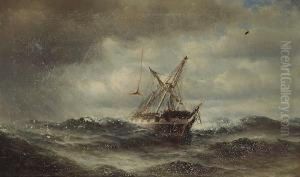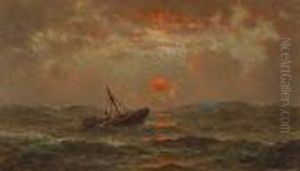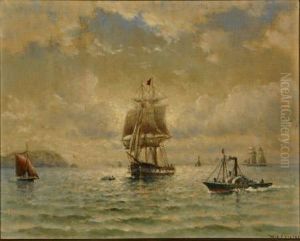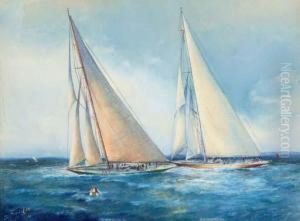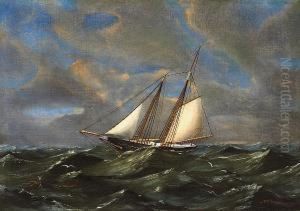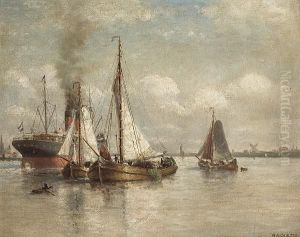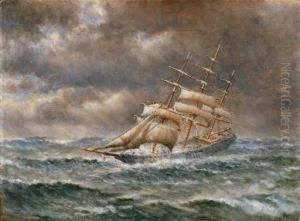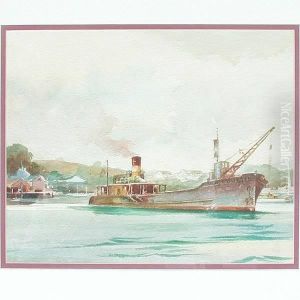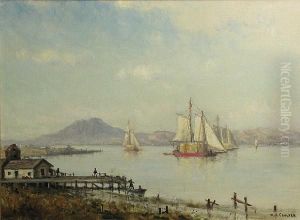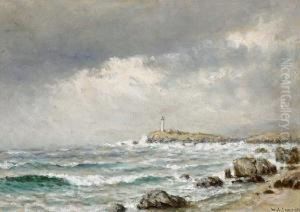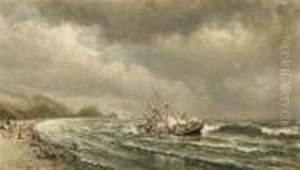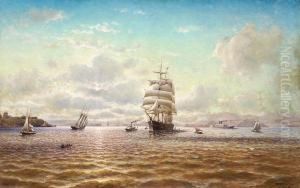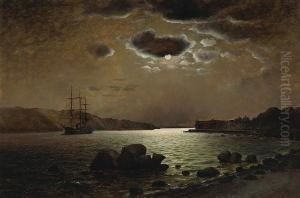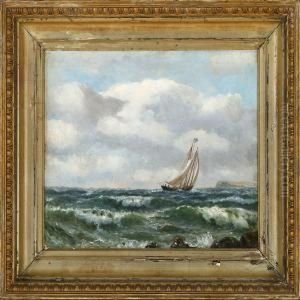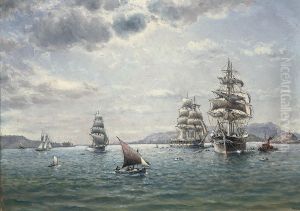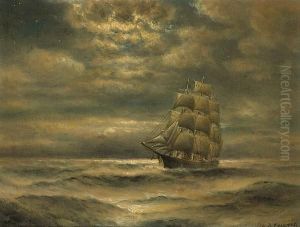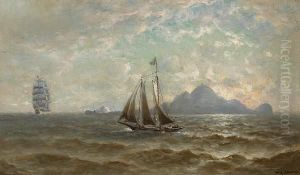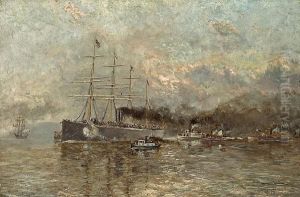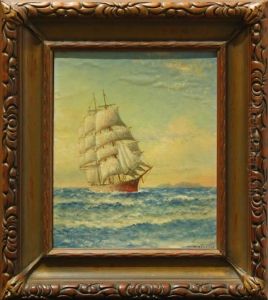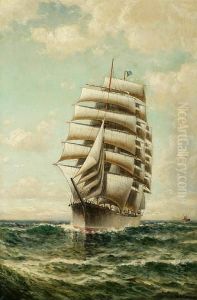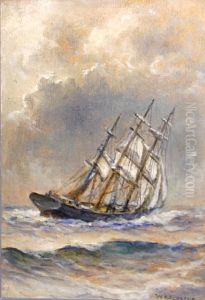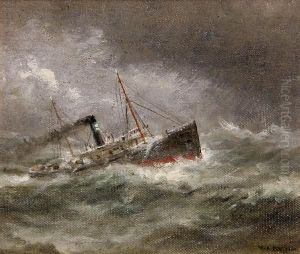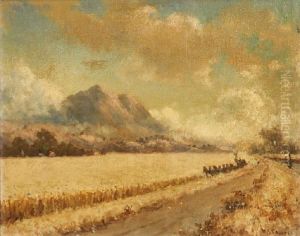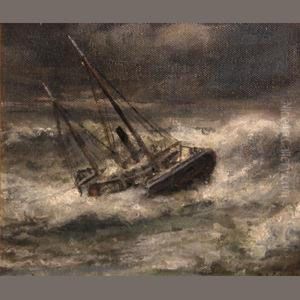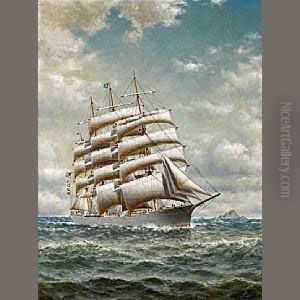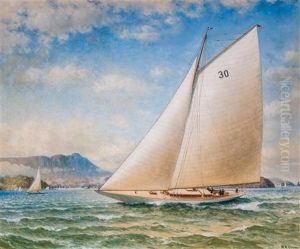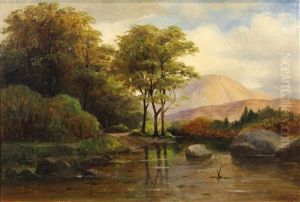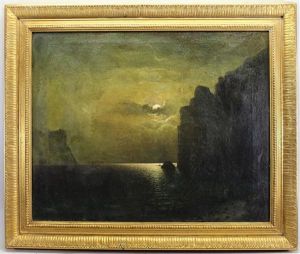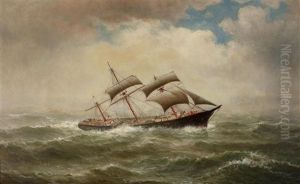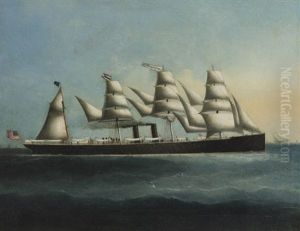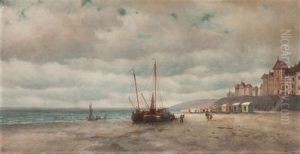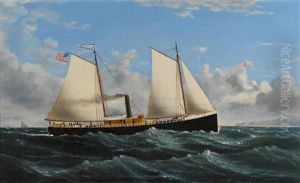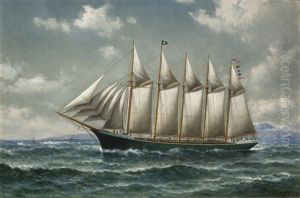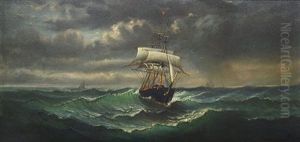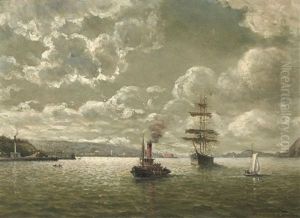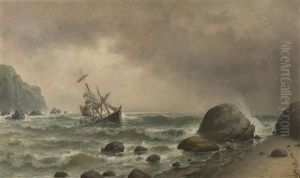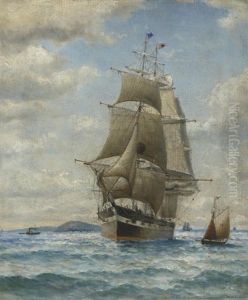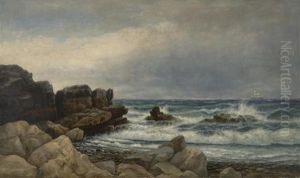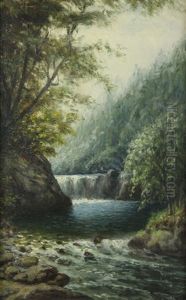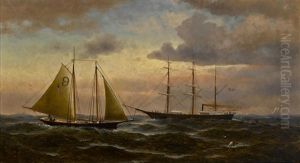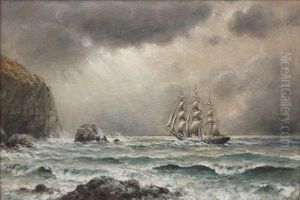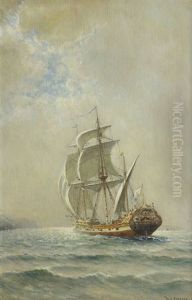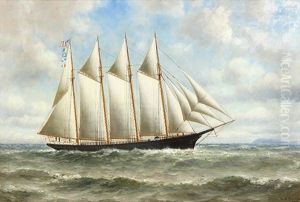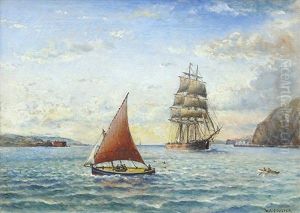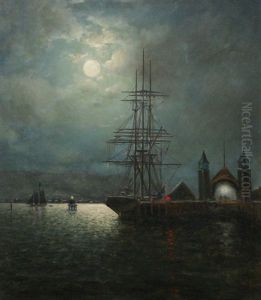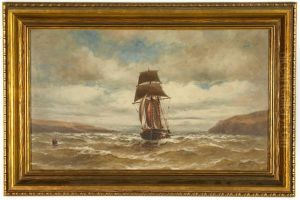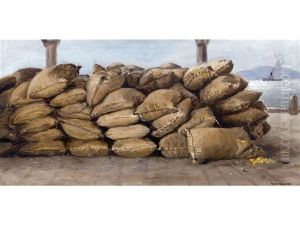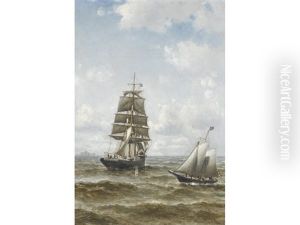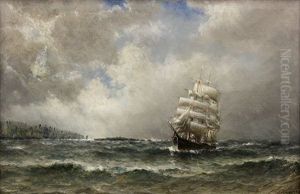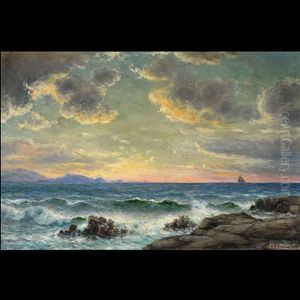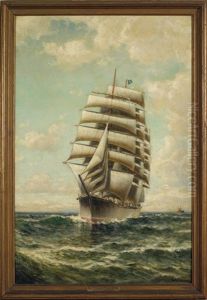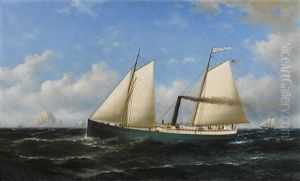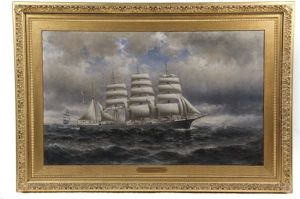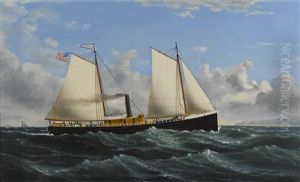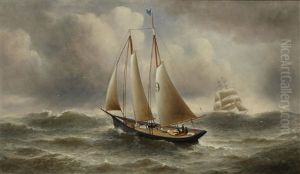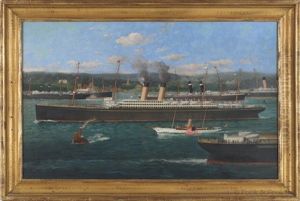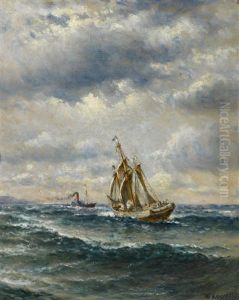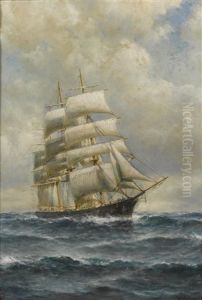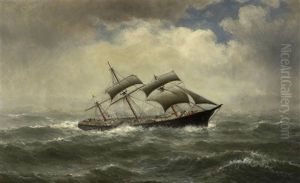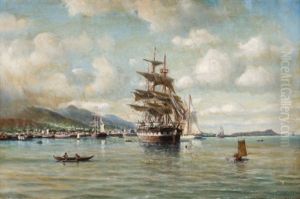William Coulter Paintings
William Alexander Coulter was an American marine artist who was born on March 7, 1849, in Glenariff, Ireland. During his lifetime, Coulter was recognized for his specialization in ships and seascapes, capturing the dynamic and evolving world of maritime activities and vessels. His work provides an important historical record of shipping, especially around the San Francisco area, from the late 19th century to the early 20th century.
Coulter's family moved to the United States when he was a child, and by the age of 13, he found himself at sea. This early maritime experience would profoundly influence his future art, as he developed a keen understanding of the workings and aesthetics of ships and the sea. He eventually settled in San Francisco, which was a burgeoning port city at the time, becoming part of its vibrant maritime community. His career as a marine painter began there in the 1870s and continued for the next six decades.
Coulter was largely self-taught but did spend a brief period studying in Europe, which was common for artists of his era. He worked in a variety of mediums, including oil painting and watercolor, and his style was characterized by meticulous attention to detail, particularly in the rendering of ships. His works were often based on specific historical events or featured particular vessels, which made them valuable not only as art but also as historical documents. He sometimes included human figures in his scenes, which added a narrative element to his work.
William Coulter's paintings were well-received during his lifetime, and he became an esteemed member of the San Francisco art community. He exhibited his work at various venues and was involved in the Panama-Pacific International Exposition of 1915. Coulter's art has been featured in numerous museum collections and continues to be appreciated for its historical significance and artistic merit.
Coulter passed away on March 13, 1936, in San Francisco, having spent the majority of his life documenting the maritime history of the Pacific Coast. His legacy lives on through his extensive body of work, which remains an invaluable resource for understanding the maritime history of the United States, particularly the Pacific Northwest, during a time of great change and development.
